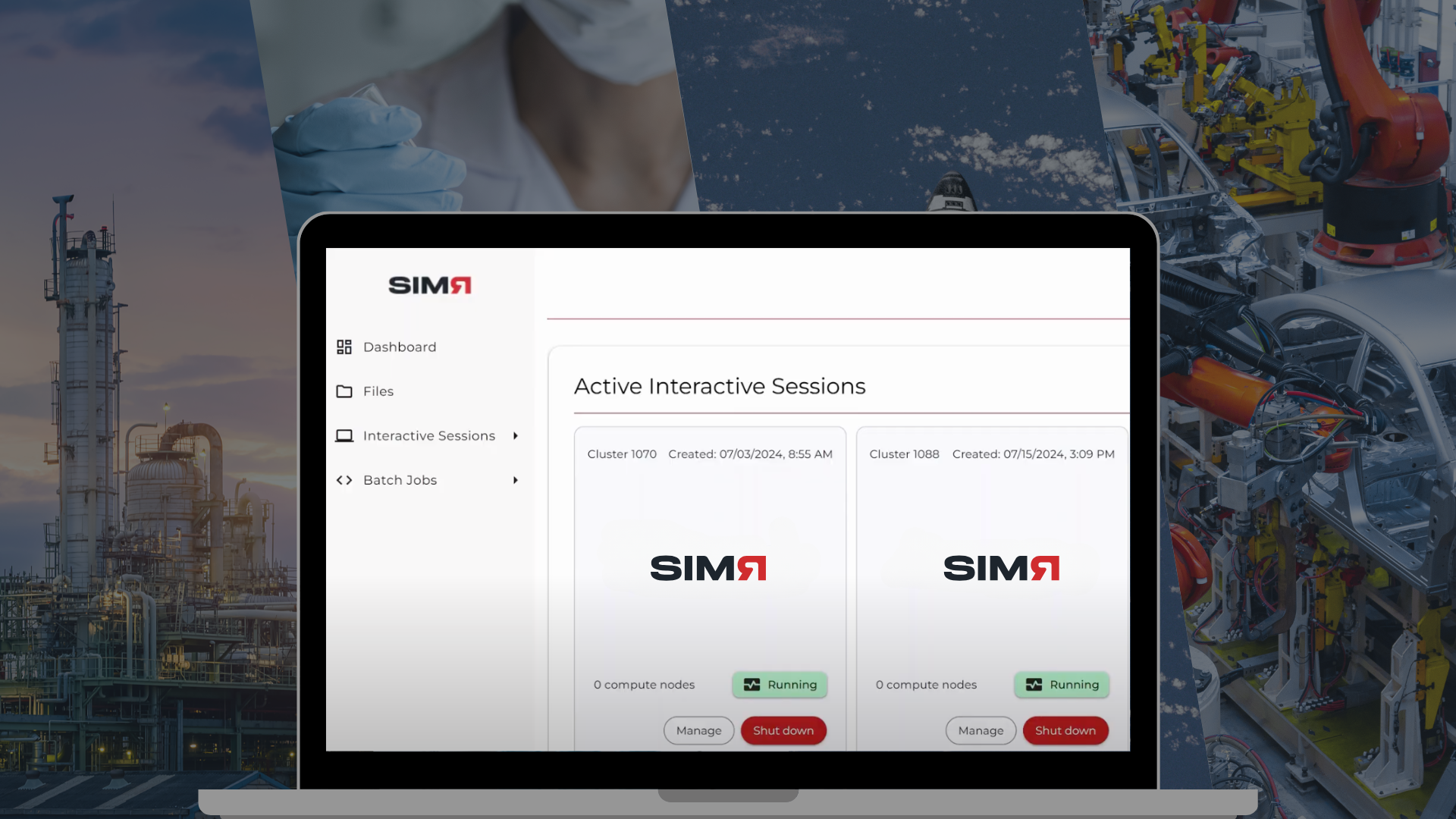UberCloud helps engineers run their simulations with high performance and reliability. We achieve this by helping enterprises migrate complex engineering workloads to High Performance Computing (HPC) cloud resources and fully realize return on investment (ROI). Our automated Engineering Simulation Platform lets you easily build flexible HPC services in your own cloud account, delivering business agility and lowering total cost of ownership (TCO) all whilst enabling full control over hardware, software and data. For our customers, we offer a wide range of commercial and open source applications from Ansys, Altair, COMSOL, Dassault, Siemens, and many more, that are integrated into the high performance platform that is secure and easy to administer.
Performance
Application performance on cloud infrastructure is crucial for the success of our customers. The overall simulation runtime depends on many factors, including CPU core performance, the number of cores, speed of memory caches and their sizes, memory access times and throughput, and disk performance. The application performance strongly influences the productivity of the engineers, reduces costs of the dynamically managed infrastructure, and lets engineers perform many more and more complex simulations. This improves product quality and allows our customers to be faster to market.
Google Cloud’s New C2D Instances Powered by AMD
Google Cloud Platform (GCP) recently introduced a new compute optimized VM based on 3rd generation AMD EPYCTM processors called C2D. C2D instances provide the largest VM sizes within the Compute Optimized VM family and are best-suited for HPC workloads. C2D supports persistent disks, advanced networking, compact placement policies, spot allocation, and Google Kubernetes Engine (GKE). Instances are configurable with up to 112 vCPUs (56 cores), 896 GB of memory, and 3TB of local SSD each. UberCloud’s engineering simulation platform fully supports C2D instances including their use as spot instances that can significantly reduce the overall cloud costs. In order to use the new instances only the instance type must be requested inside the configuration; all other settings are applied automatically.
Engineering Simulation Workloads
For our performance benchmarks, we used Ansys LS-DYNA, a commercial general purpose multi-physics simulation software used in many industries like automotive, aerospace, construction, and manufacturing. For assessing and comparing the performance provided by the new Google C2D instances, UberCloud executed relevant LS-DYNA simulations in a GKE-based backend. Creating the compute cluster, executing the simulation, and deleting the cluster can be done either by a single click on the graphical user interface or by single command line calls, which can be embedded in any enterprise environment that supports executing containers or command line tools. The graph below shows the runtime of an LS-DYNA simulation executed in different environments. The first graph shows the overall scaling of the simulation by running on up to 8 C2D nodes, each with 112 vCPUs.

The second graph (below) displays a comparison of N2D instances based on AMD 2nd Gen EPYC Processors against the new C2D instance based on AMD 3rd Gen EPYC processors. On each architecture, LS-DYNA simulations have been executed spanning 2, 4, and 8 nodes. Even though N2D instances provide more cores in total, overall performance improvements when switching to C2D instances are significant for this workload.

The third graph (below) compares the new C2D instances with C2 instances, Google Cloud’s first HPC instance type.

Conclusion
Google Cloud’s new AMD powered C2D instances provide a high number of cores, have large caches, and can be configured with high amounts of memory. Combined with UberCloud’s Engineering Simulation Platform this results in an outstanding performance for engineering simulations. That makes C2D instances an ideal choice for typical industrial applications, like computational fluid dynamics (CFD), finite element methods (FEM), discrete element methods (DEM), multi-physics simulations, and digital twins. UberCloud’s fully automated, self-service platform can deploy such applications either on VMs or in dynamically created, disposable GKE environments. The UberCloud Engineering Simulation Platform, including the use of C2D spot instances, can significantly reduce cloud costs while supporting the highest computing demands of enterprises. With this solution it is a simple process to create, resize, and delete dedicated environments to let engineers run any HPC simulation in the cloud.
.png)




